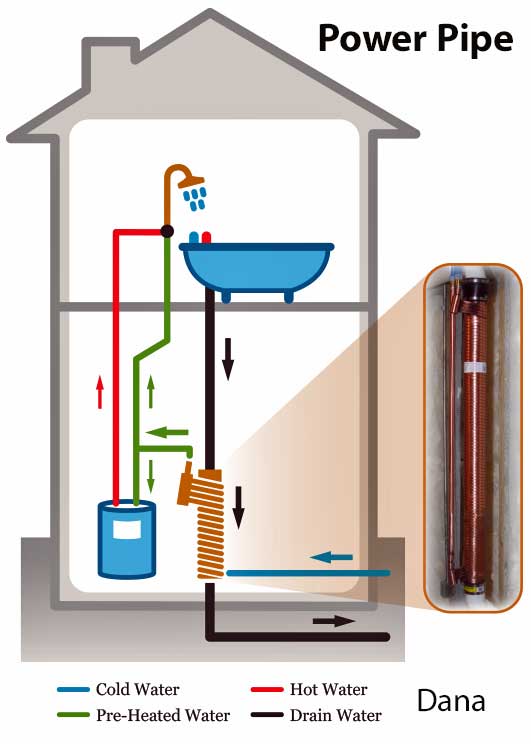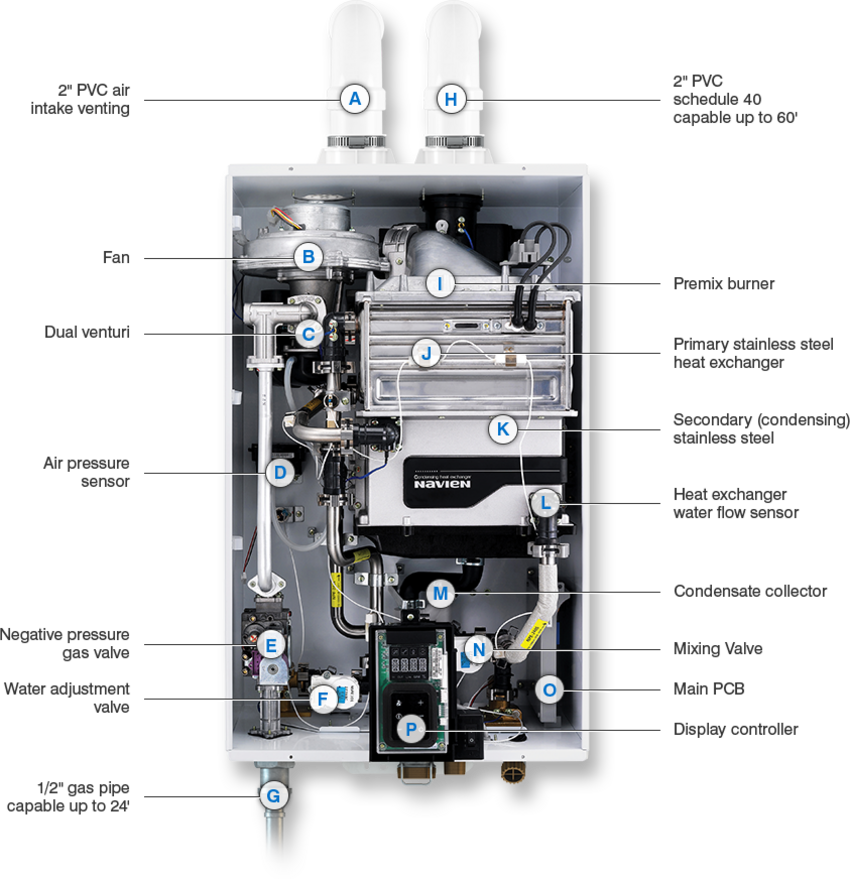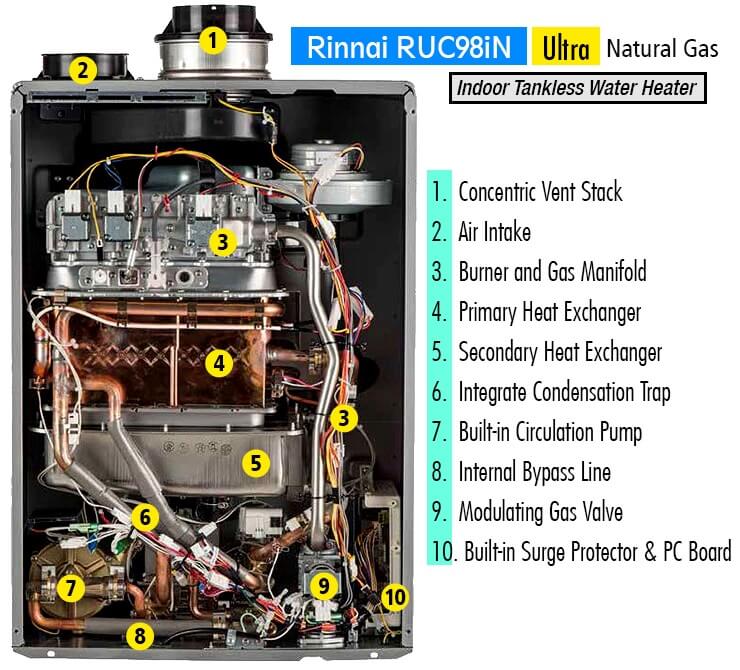Condensing has the advantage of having greater thermal output for the same burner size. The gpm numbers given by numers are all presuming a particular temperature rise that may not be relevant to your application. It's all about the BTU. An input of 199,000 BTU/hr at 95% efficiency delivers 189,000 BTU/hr to the water. At a 70F temperature rise (40F to 110F, a decent bathtub filling temperture) the max flow is 189,000/70F= 2700 lbs per hour, or 45 lbs per minute.
At 8.34 lbs/gallon that's
5.4 gpm for the condensing unit.
An input of 199,000 BTU/hr in an 85% efficiency burner deliversd 169,000 BTU/hr to the water, which at a 70F rise is 2414 lbs/hr == 40.2 lbs/ minute ==
4.8 gpm for a non-condensing unit.
Non-condensing tankless heaters require stainless steel exhaust vent piping which is quite expensive. When the venting is that expensive people tend to mount it as close as possible to an exterior wall to keep the venting cost reasonably bounded, but in Minnesota wind coming down the vent can freeze and break the heat exchanger in just a matter of hours when it -10F outside.
Condensing tankless heaters can use inexpensive plastic piping, and can (and should) be set up to pipe in the combustion air directly from the outdoors. By mounting it where there's at least 10' of vent before it goes outdoors and with the combustion air piped into a sealed unit there isn't much potential for freeze up, since the wind then can't force a backdraft of outdoor air through the heat exchanger.
There is no question but that a condensing unit is going to be cheaper and better to install in a way that has low freeze-up risk.
The "Lexus of LP condensing water heaters" would be something like the
Rinnai RU199IP. Rinnai is the world's largest manufacturer of gas/LP fired appliances, and headquartered in Japan, but with excellent support network in the US. The "Camry" equivalent would be something like the HTP
HydraSmart RTO-199, which is designed manufactured in Korea by Kiturami (a first tier boiler manufacturer), but imported and supported by HTP, a boiler & water heater company in Massachusetts. Competing head to head with HTP/Kiturami (both in Korea and the US) is the
Navien NPE-240A. Unlike Kiturami, Navien's North American market strategy was to set up their own support network, along the lines of Rinnai, but it's not as extensive or well developed as Rinnai. The DO have a presence in Minnesota, but I'm not sure how well supported it would be in your part of the state.
There are others. It all boils down to just how competent the installers are, and how much product support there is in your local area. Bosch support isn't that great near me, but Rinnai/HTP/Navien are all very well supported with local distribution and dozens of experienced installers to choose from. The last thing you want is an installer whose tankless experience is just yours and one or two others before that, who has never taken the factory/distributor training on how to set up and fully commission a big burner modulating unit like that.
Depending on your propane pricing and showering patterns it might be worthwhile to install a decent sized (4" x 48" or taller) drainwater heat recovery unit downstream of the shower drain. That would cut the BTU/hr requirements of a shower in half, leaving more margin for other uses, and would be enough to down-size to a smaller tankless. The current best-in class is the EcoDrain V1000 series, pushing Renewability's PowerPipe industry from a long held industry dominance (they're not bad either.) At 2.5gpm the 4" x 48"
V1000-4-48 returns 57% of the heat back to the incoming water stream.
At a 65F temperature rise (40F in, 105F at the shower head) a 2.5 gpm (= 1250lbs/hr) shower takes 81,250 BTU/hr. If a heat exchanger is delivering 57% of that heat it is freeing up 0.57 x 81,250= 46,313 BTU/hr of burner output for other hot water use.
That's the equivalent of adding 50,000 BTU/hr of burner (input) to the unit, but a 50K burner that uses no additional fuel, and has a zero maintenance lifecycle of a handful of decades. With a 4 person showering-only household it'll definitely pay for itself many times over in it's service life, and depending on your propane rates and showering habits that can be in less than 5 years. As a general rule the fattest and tallest one that fits pays off the soonest, due to the higher efficiency outpacing the higher marginal cost of the unit.






